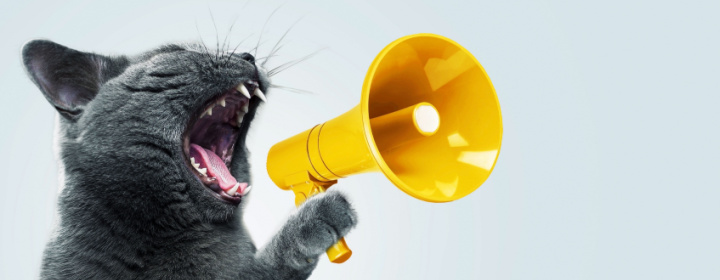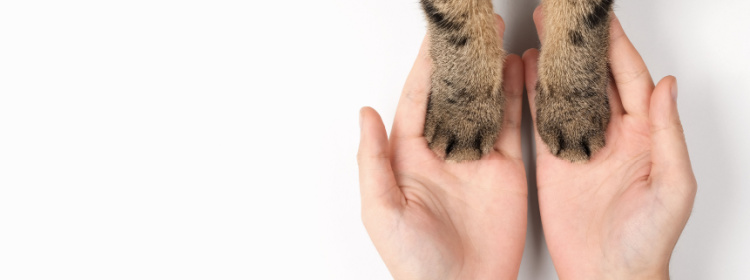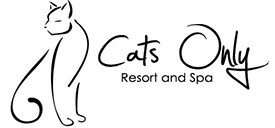
What Your Cat Is Trying to Tell You in Collinsville, IL
What your cat is trying to tell you in Collinsville, IL. Cats are amazing and peculiar beings that have been living among us for thousands of years. They have a reputation for being aloof, but this couldn't be further from the truth. In actuality, cats communicate a lot, and they are constantly trying to let their Collinsville, IL owners know something. In this blog post, we'll look at some of the common ways your cat communicates with you, so you can better understand what your fluffy family member wants and needs.
At Cats Only in Collinsville, IL, we chose our name with a purpose: there will be no dogs at the facility to make your cat nervous. We know that cats are special beings, and we always work to treat and handle them in ways they find comfortable. If you need cat grooming, cat boarding, or cat daycare services in Collinsville, IL, call us today at 618-772-8315. Otherwise, keep reading to understand better how your cat is trying to communicate with you.
Purring
Everyone knows the purring sound that cats make, and we usually think it means they are happy and relaxed. But, cats also purr when they are feeling anxious or stressed, so it's important to pay attention to your cat's body language to be sure about why they are purring. If your Collinsville, IL cat is relaxed and has a soft, loose body, then they are likely purring because they're happy. On the other hand, if your cat's body is tense or they are exhibiting other signs of stress, such as a fluffed-up tail, they might be purring to make themselves feel better.
Meowing
Meowing is how cats get people's attention. While cats do meow at each other, they primarily use meowing to get a human being's attention. The tone, duration, and frequency of a cat's meow can convey a range of emotions and messages, from a simple greeting to a demand for food. Pay attention to your Collinsville, IL cat's meows and try to figure out what they are trying to tell you.
Body Language
Cats are masters of non-verbal communication, and they use different postures and movements to communicate with us. Some signs to look out for include:
- Tail position — The movement and position of a cat's tail follows their mood. A straight tail pointing up into the air indicates confidence and happiness, while a tucked tail indicates fear or anxiety. A swishing tail may be a sign of excitement, being annoyed, or intense focus.
- Ears — A cat's ears can also tell you how they're currently feeling. When their ears face forward it can be a sign of interest or curiosity, while ears pointed down toward the side may indicate "fighting mode."
- Pupil dilation — A cat's pupils will dilate as the result of a variety of stimuli, including arousal and frightfulness. Pay attention to your cat's pupils to get a sense of how they're feeling.
- Posture — A cat's body posture can also give you indications about how they're feeling. A relaxed, open posture suggests that they feel relaxed and happy, while a tense posture suggests anxiety or fear.
Grooming
Cats are scrupulous beings and spend 30-50% of their day grooming themselves. However, grooming can also be a way for cats to communicate with their owners. For example, if your cat "grooms" your hand or face, they may be expressing affection. Conversely, if you notice lesions or lack of fur from over-grooming, it may be a sign of stress or anxiety. Try to follow your Collinsville, IL cat's grooming habits and look for signs of over-grooming.
Vocalizations
Beyond meowing, cats make a variety of other vocalizations that can convey different messages. Here are some examples:
- Hissing — A cat will hiss when they feel threatened or fearful. If your cat is hissing, leave them by themselves for a while and try to find out what's scaring them.
- Chirping — Cats will often produce a chirping or trilling sound when they see an animal that they would typically hunt in the wild. This is a fundamental hunting instinct and nothing to worry about as long as they're in a safe space.
- Growling — A cat will growl when they feel threatened or aggressive. If you hear your cat growl, leave them by themselves for a minute and don't bother than again until they're more relaxed.
Scratching
A cat's urge to scratch is natural, and they do it for many different reasons, including maintaining their claws. However, if your cat is scratching excessively or in the wrong spots, they could be anxious. Giving your cat a scratching post and redirecting their behavior to appropriate surfaces can help alleviate these issues in Collinsville, IL.
Litter Box Behavior
How your cat acts in the littler box can also provide insights into their health and emotional state. If your cat no longer uses the litter box or shows changes in their bathroom habits, it may be a sign of a medical issue or stress. It's important to deal with these issues promptly and schedule a visit with your Collinsville, IL veterinarian if necessary. Sometimes, getting a bigger or more comfortable litter box resolves the issue.

Cat Care in Collinsville, IL | Cats Only
Cats communicate in a variety of ways, and it's important to pay attention to their body language, vocalizations, and behavior to better understand their needs and emotions. By making the effort to learn your Collinsville, IL cat's communication style and responding appropriately, you can deepen your bond with your feline family member and ensure their happiness and well-being. As a cat grooming and boarding business, we how important correctly understanding cats is, and everyone who works here is trained to be able to understand cats and handle them in a way that doesn't bother them. We strive to provide the best care possible to our feline guests. If you need cat grooming, or if your cat needs a safe and fun place to stay while you're out of town, please don't hesitate to reach out to Cats Only in Collinsville, IL at 618-772-8315.

